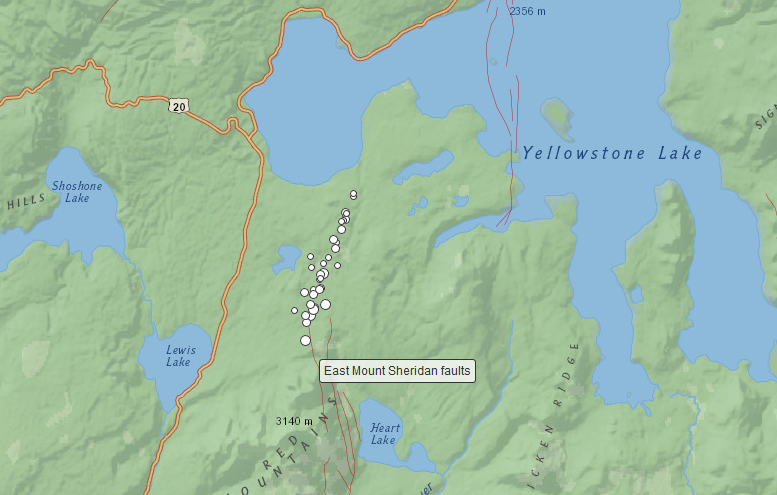|
In the afternoon/evening of August 29, 2019, the strongest rapid-fire swarm to strike Yellowstone since late-2018 occurred. It was a typical strong rapid-fire swarm which struck along the East Mount Sheridan fault system. The characteristics of this swarm are indicative of some type of magmatic fluid migration, likely hydrothermal fluids which do commonly transport up towards the surface. I will show the usual seismic plots and seismic audio to this earthquake swarm. Please click the title of this post or "read more" to continue... First off, please check out the USGS EQ map button above to view reported seismicity for this location and time period. You may also select the station map button to see all stations within Yellowstone National Park. On August 29, 2019, a large rapid-fire swarm broke out south of West Thumb Lake and ENE of Lewis Lake. This earthquake swarm was the largest rapid-fire event within the Yellowstone National Park boundary since the December 31, 2018 earthquake swarm that struck NNW of the northern tip of Yellowstone Lake. Over the past few months, seismicity has slowly been increasing around the northern section of the East Mount Sheridan fault system (pictured above). The recent rapid-fire swarms there have primarily been small. I believe it is possible this is related to magmatic fluid migration along the fault structure, from below to above it, therefore causing hundreds of micro-failures causing these earthquakes. Rapid-fire swarms like this are usually associated with fluid migration, especially at Yellowstone. Yellowstone has a very large and dynamic hydrothermal system so fluid migration such as this should occur periodically. To see previous swarms like this one, please CLICK HERE to visit my page dedicated to rapid-fire swarms at Yellowstone from 2014-2018. Below is some information about this swarm: August 29, 2019 swarm: Start of swarm: 21:20UTC End of swarm: 22:45UTC (Total of 1 hour and 25 minutes.) Info: A few micro-quakes occurred before and after the time period stated above. I am only dealing with the main earthquake swarm sequence for August 29 in relation to what plots and information I am posting. This swarm also occurred along the northern most section of the East Mount Sheridan fault system. It is possible this is related to magmatic fluid migration along the fault structure, therefore causing hundreds of micro-failures causing these earthquakes. Total earthquake count (includes even the tiniest, unreported events): ~210 events of all sizes (Although many were very small, and some were not, so this count could be lower than the actual count. This is due to many of the events being so closely spaced that they appear to be one event.) Reported count: 35 (more might be reported soon) Largest reported earthquake of this swarm: M2.7 at 2.0km in depth Largest amplitude: ~101,000 (PB_B944_--_EHZ), ~32,800 (WY_YLT_01_EHZ) Closest active seismic station to swarm: B944 in the PB network Severity: Moderate-Major short term rapid-fire swarm Depth of swarm area: 1.4km through 9.4km in depth. Below are helicorder plots from the 6 closest seismic stations to this swarm: If you wish to see which earthquakes in the plots below were reported, simply go to one of the buttons I provided somewhere above that shows you the USGS earthquake map for Yellowstone during this time period. Earthquakes are reported in UTC and the times on the plots are in UTC as well. Also, I do not detail every single event of the swarm in the plots below. However, I do try to show most of them. There are 38 images within the slideshow below. Also, as usual, seismic audio of this earthquake swarm is below. The audio was taken from the seismic station used for the plots above. All seismic audio is best heard when it is sped up. Please use your headphones since it may be hard to hear with a computer speaker, but be wary of the volume! Every pop or crack you hear is an earthquake. Enjoy!
0 Comments
Leave a Reply. |
About
Please click a post title to view the data pertaining to that event! Archives
February 2020
Categories |



 RSS Feed
RSS Feed